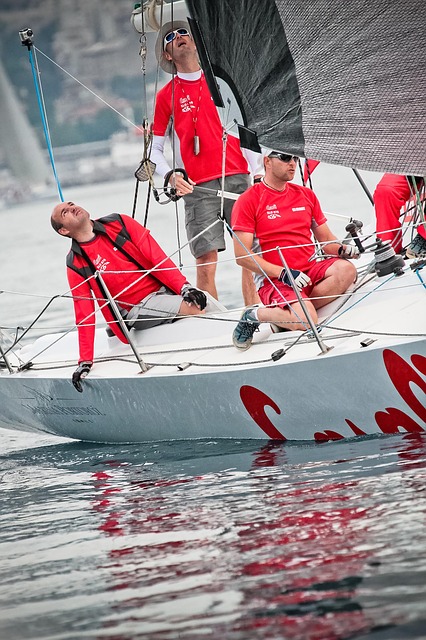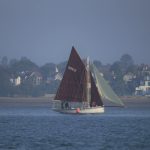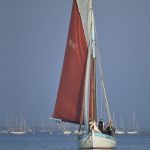
 What a treat it was listening to Michael Macnamara’s talk last night (20th Feb). How to get the best (or unintentionally the worst) out of your boat and especially the sails was the theme. As a Sailmaker ,multiple National champion and Chief Racing coach to the International Cadet class his experience and knowledge is peerless. I do remember him going through the Cadet dinghies, before launching, re-rigging, suggesting improvements and answering endless questions from dozens of youngsters. On windless days (you can’t have too much wind for a Cadet!) he would talk for hours to a rapt audience inspiring all and starting many on the pathway to become Olympic hopefuls and even go on to win medals.
What a treat it was listening to Michael Macnamara’s talk last night (20th Feb). How to get the best (or unintentionally the worst) out of your boat and especially the sails was the theme. As a Sailmaker ,multiple National champion and Chief Racing coach to the International Cadet class his experience and knowledge is peerless. I do remember him going through the Cadet dinghies, before launching, re-rigging, suggesting improvements and answering endless questions from dozens of youngsters. On windless days (you can’t have too much wind for a Cadet!) he would talk for hours to a rapt audience inspiring all and starting many on the pathway to become Olympic hopefuls and even go on to win medals.
Here are some of the points he made to improve upwind speed and some spinnaker ideas. I can’t remember everything and hopefully others will add further comments.
- The ‘slot’ effect is vital, the leech of the jib must follow/match the curve of the lee side or the mainsail
- The wind must flow over both sides of both sails and because it has to defect by as much as 90 degrees the main must have a flat entry (no ridges or over fullness of luff). Excessive halyard tension or use of the Cunningham are out.
- Over sheeting or excessive kicker causing the leech of the main to ‘hook’ to windward slightly is disastrous as flow is quickly lost. In a 2 sail boat like a GP14 the boom needs to be on or near the centre line but don’t overdo it and be very quick to open the leech if flow is lost or as a gust approaches.
- The sheeting angle for the headsail and sheet tension are also very critical. He suggested that the sheet should follow the line from the clew to the luff of the jib at half height. Athwartship fairlead adjustment is unnecessary but the sheet must be eased at times to open the slot very slightly.
- The top section of the main acts like a headsail as there is no ‘slot’ effect so it must be twisted to the same angle of attack as the jib otherwise flow is lost. The ‘telltales’ are a vital guide and should flow for more time than many guides suggest. The ¾ height telltale is possibly more important than the top one.
- The same principles apply to spinnakers, they must not ‘trap’ air by being over sheeted. The sheet should always be eased until the middle of the windward edge is on the ‘curl’. The air must get out and form a ‘slot’ for the jib. NEVER let the pole rest on the forestay either!
- Running: sail angles of about 10 degrees, the turbulence behind the sails is very marked so really work at avoiding being blanketed. The main should reverse flow into the spinnaker so pull the pole back as far as possible and don’t let the main (as I do) twist so far open that this cannot happen.
Tacking on and anticipating headers and gusts, keeping the boat really flat, the use of mast chocks etc etc were all covered too. All in all a very comprehensive coverage of a compex subject illustrated with examples ranging from oppys to yachts. A brilliant evenings talk, THANK YOU to Rik for arranging it and sincere thanks to Mike for coming all the way from Norfolk to entertain us.
George Rogers


